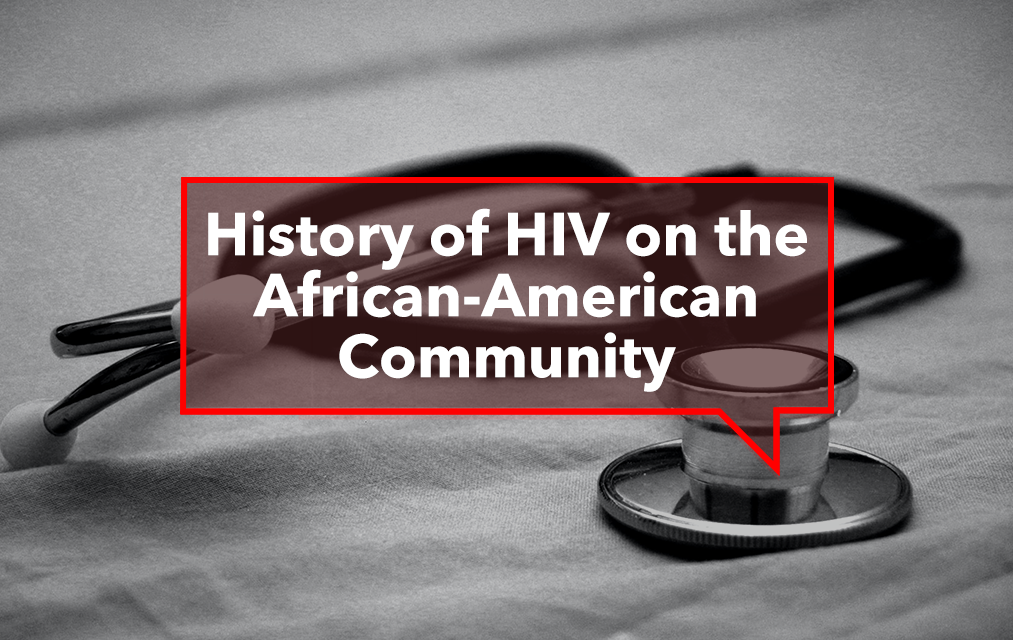The History of HIV on the African-American Community

African-Americans are disproportionately affected by HIV, more than any other racial group in the US. Despite a recent overall drop in HIV diagnoses, there are still significant disparities between racial groups. African-Americans accounted for 42% of the HIV diagnoses but made up only 13% of the country’s population in 2018. In the African-American community, black gay and bisexual men are the most affected by HIV, followed by black heterosexual women. More measures must be implemented to help address the fact that the African-American population remains overrepresented across all transmission modes. While prevention efforts continue to increase, certain challenges remain involving HIV and African-Americans.
Lack of Awareness
Some of the population may not know that they are HIV-positive. In fact, 1 in 7 HIV-positive African-Americans are unaware of their diagnosis. As HIV symptoms might go undetected, these people will not realize that they require treatment. As a result, they are at a higher risk of spreading HIV to others.
Stigma
Additionally, cultural biases such as discrimination and homophobia may place African-Americans at a higher risk of contracting HIV. Some may be afraid to seek treatment due to the stigma attached to HIV. Similarly, the stigma surrounding homosexuality might also prevent men from coming forward.
Unprotected Sex
As HIV is transmitted through the exchange of bodily fluids, it is often contracted through sexual encounters. In particular, unprotected sex increases the risk of transmitting HIV. Condoms and other methods of protection can be highly effective in preventing HIV.
Poverty
Middle- and low-income communities are hit the hardest by the HIV epidemic. This is due to the lack of availability of resources. For example, these communities may not have access to critical information, HIV testing, or HIV treatment options. Additionally, low-income communities are associated with a higher level of drug use, another transmission route for HIV. The transmission can occur by sharing needles or other drug equipment.
Health Organization Preventative Measures

Health organizations are working towards raising awareness about HIV and African-Americans. For example, the CDC is the national health protection agency for the US. They are responsible for funding state, territorial, and local health departments to invest in HIV prevention measures. Additionally, they work towards researching new technology and techniques to help prevent HIV and aim to eliminate prejudices and biases when treating patients.
Taking action against HIV involves eliminating the stigma surrounding HIV, so more people feel safe talking about it. Many misconceptions about HIV from the early 1980s are still circulating. Distributing accurate information on what it means to live with HIV and encouraging open discussion will increase the number of tested and treated people. Organizations aim to reach this initiative by increasing HIV education, testing, community involvement, and treatment among black communities across the nation.
Further, providing education on safe sex can help decrease the transmission of HIV. Although there is no cure for HIV, with the correct treatment, it can be controlled. Additionally, medicines are emerging that reduce the risk of transmission from an HIV-positive partner to an HIV-negative partner. Similarly, medicines exist to decrease an HIV-positive partner’s chances of transmitting the virus to an HIV-negative partner.
HIV Testing
As a part of the HIV prevention initiative, many HIV tests are free and easily accessible. Knowing one’s HIV status is crucial to take proper health measures moving forward, both for the safety of yourself and others. If someone receives a positive test, they can begin HIV treatment to stay healthy and to avoid transmitting HIV. On the other hand, if someone tests positive, they can get educated on HIV tools for prevention to reduce the risk of contracting the virus in the future.
Unfortunately, HIV and African-Americans remain a growing public health concern in the United States. However, with the proper medical information and treatment, the HIV epidemic can be controlled. Getting tested regularly is important for protecting yourself and others against the transmission of the virus. In summary, the most important steps to combat HIV involve raising awareness, promoting prevention, and addressing HIV-related stigmas and homophobia in African-American communities.

